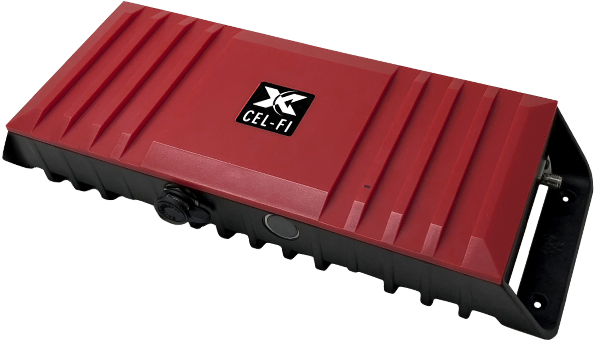Based on recommendations from AT&T, members of the North American team installed CEL-FI GO RED in each of their disaster response trailers to deliver the FirstNet signal strength needed. CEL-FI GO RED, a FirstNet booster developed by Nextivity, amplifies Band 14 cellular signal for emergency communications and Band 12 for general communications.
“Today we use CEL-FI GO RED as part of our larger cellular LTE backhaul infrastructure to pull in stronger signals from damaged infrastructure to our modems, and to boost that FirstNet signal inside the trailer,” says an ICT disaster response specialist with the North American team.
CEL-FI GO RED is installed inside the trailers in a cabinet next to other communications equipment. An external multi-band antenna sits on top of each truck. The signal is then split between an internal server antenna located inside the office space and an LTE modem from Cradlepoint, which serves as the connectivity backbone for its network. At any given time, there are between 10 to 12 people working off the modems, sending emails, accessing internal applications – and even getting updates from the local news.
Each unit took about 15 minutes for the in-house IT team to install. With the CEL-FI WAVE app, the organization can run diagnostics remotely to ensure the equipment is working as it should. This has also accelerated pre-deployment readiness checks on the vehicles, which means the organization is ready to lend a hand as soon as it arrives at a disaster site.
“With CEL-FI GO RED it’s business as usual,” explains the ICT disaster response specialist. “We don’t have to wait for a video stream to end before we can send a text or make a call. It removes a layer of complexity that enables us to just get on with the job of helping people when they need it most.”
